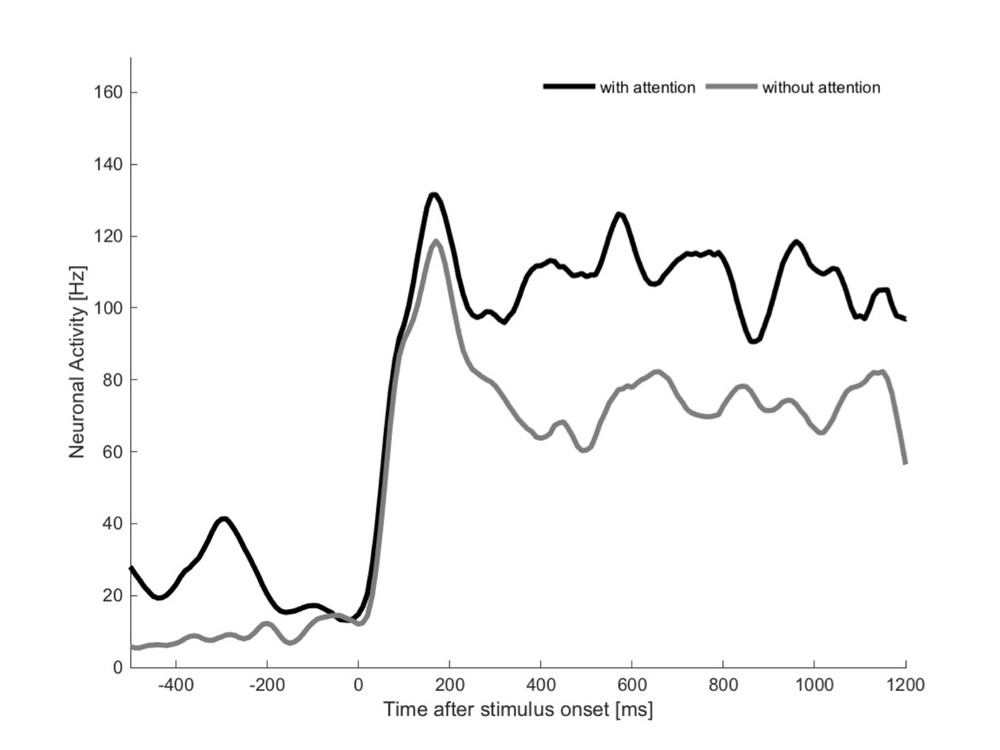Research of the Cognitive Neuroscience Lab
Motion Discrimination and Attention
Understanding the environment in which we primates live is essential for individual survival.
Among the many features the visual world is composed of, motion is one of the highest in complexity and of central interest for the Cognitive Neuroscience Lab.
At the CNL motion perception is experimentally studied and analyzed in its main components, detection and discrimination, by means of psychophysics, the study of the relationships between the objects, and their perception.
Motion is also studied in the context of how we, as primates, make sense of the vast amount of information that flows to and through our eyes at any given time.
This high cognitive ability, called attention, allows us to use contextual information from the environment and focus on potentially relevant information.
Experimental conditions A, B, and C are meant to exemplify three typical situations in which the motion of a stimulus needs to be discriminated when:
- the stimulus is in isolation (A);
- the stimulus is surrounded by distractors (B);
- the stimulus is surrounded by distractors but a spatial cue points the stimulus’ location (C).
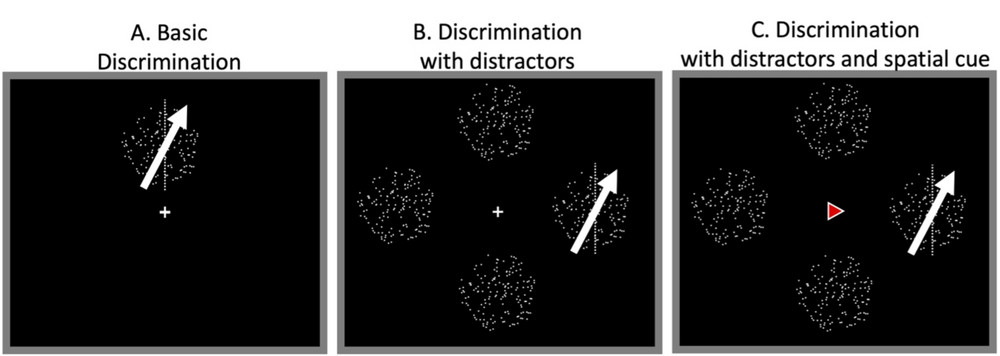
Videogame based Psychophysics
With the help of an advanced graphical environment specifically made to build psychophysics videogames, the study of the relationships between objects and their perception can be presented in an entertaining and stimulating fashion.
As has been shown in the Cognitive Neuroscience Laboratory at the German Primate Center, more fun means a more enjoyable experimental session for the subjects and more data for the scientists.
Moreover, such techniques can be employed to address perceptual abilities of clinical populations who would otherwise find common psychophysics tasks unfeasible. Such populations include children with neuropsychological or neurodevelopmental disorders, as well as the elderly population.
Videogame-based psychophysics can be used to assess cognitive and perceptual skills, but also to provide enrichment to non-human primates.
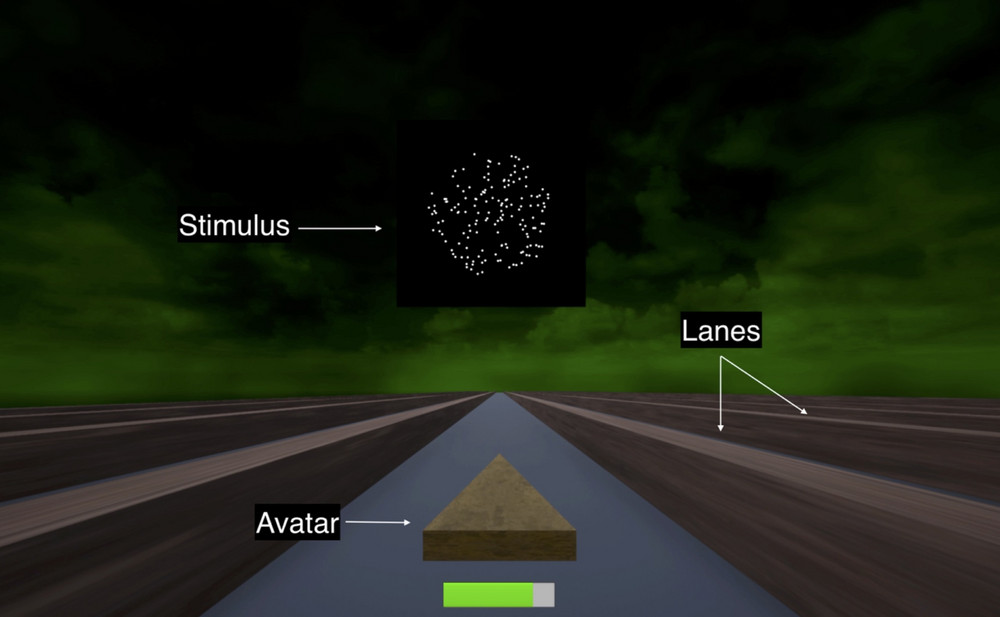
Experimental Behavioral Instrument (XBI)
The most precious members of the Cognitive Neuroscience Laboratory are the Rhesus monkeys (Macaca mulatta) that populate both the inside and outside facilities.
To habituate the animals to the cognitive tasks employed in our lab, we developed a touchscreen system that can be placed in their enclosures. Together with acoustic and visual feedbacks, the XBI delivers fruit-based juice as reward whenever the animal correctly solves one trial.
On the XBI the animals can choose which task to run on any given trial. Several tasks are available to the animal:
- the main training program that mimics what the animal is required to do during the cognitive neuroscience group’s experimental setting;
- a higher cognitive task involving memory and colors, which is used to assess the animals’ cognitive skills;
- a motor task that mimics what the animal is required to do in the sensorimotor group’s experimental setting;
- a foraging task and a picture viewing task to provide plain and simple enrichment.
When the choice interface is activated, the animal can also change which type of juice to receive from the next trial onward.
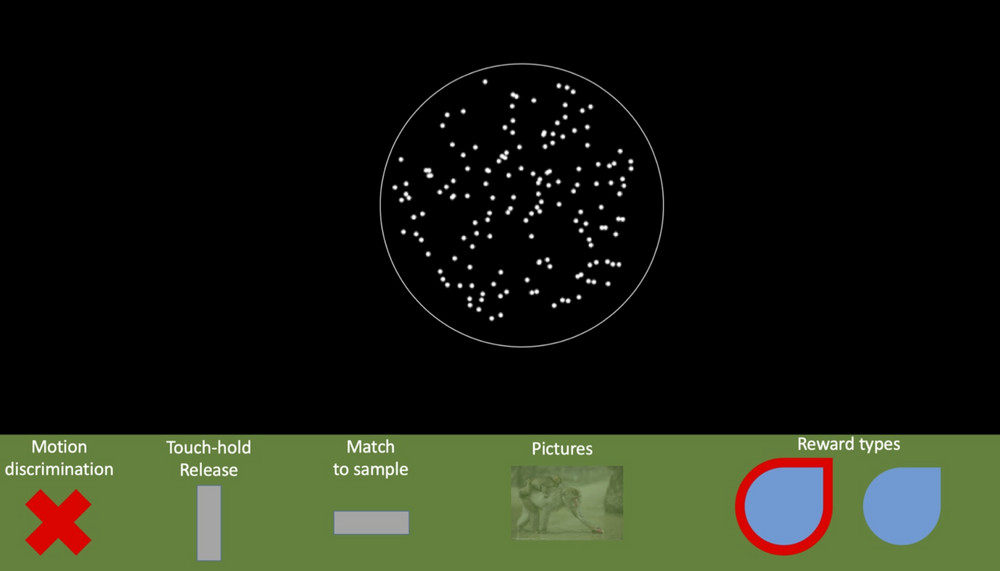
The other right! - Drawing with reversing glasses
Who doesn't know this: we should pick something on the right side but reach to the left. "The other right!" Is the cheerful and ironic advice that we often get. But what if the right and left are actually reversed when we see the world through reversing goggles? If this reverse view skews a controlled and guide movement (e.g. tracing an outline with a pen) a little from the desired position, then our sensorimotor system tries to correct the seen motion error ("too far left") in the usual way, namely by a correction movement to the right. However, since the real error is inverted with respect to the visible error, and the hand is in fact too far to the right, this correction amplifies the error instead of compensating for it. The correction mechanism that makes sense in everyday situations is suddenly doomed to failure and apparently cannot be easily overcome: the adaptation to a pair of reversing glasses and the achievement of a good sensorimotor performance under reversal is enormously time-taking. In the laboratory, we use such inversions to distinguish the seen hand movement from the actual hand movement. So we can draw conclusions about which aspect of the movement nerve cells in different brain regions encode, whether it is the muscle-driven physical movement or the visual-sensory feedback on this movement.
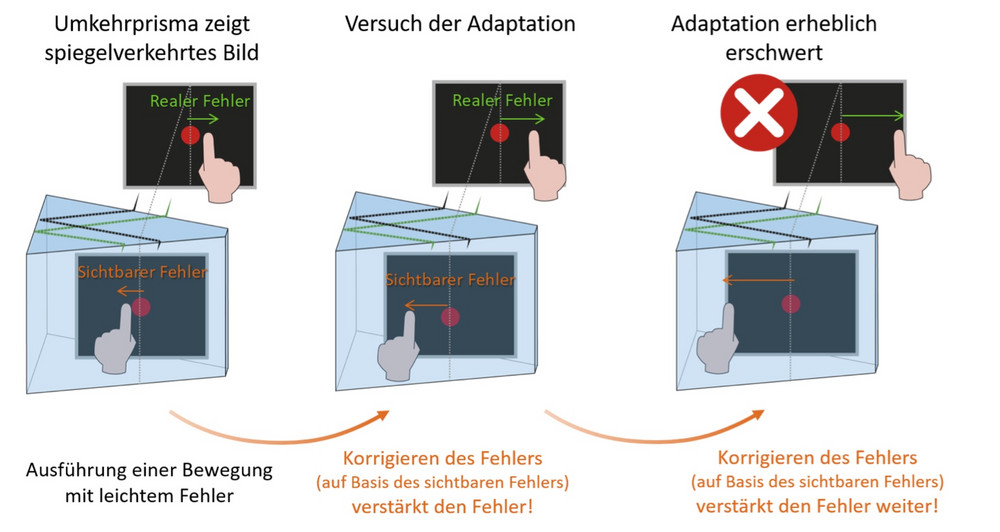
A kink in the optics! - Dart throwing with prism glasses
What happens if a body movement does not lead to the desired result, for example, if we throw a dart and it lands just beside the target, even though we were sure we were aiming for the middle? Our sensorimotor system has learning mechanisms for correcting such movement errors. Adaptation mechanisms correct future movements due to previously perceived errors. This is done without us having to be aware of it and through a process whose neural foundations are not yet understood. The cerebellum probably plays an important role, because patients with damage to the cerebellum sometimes experience difficulties with this form of learning. The experiment with the prism glasses shows that it is indeed a neural adaptation process, and not a strategic compensation of the error: if a movement error is provoked by a lateral displacement of the viewed image, this error becomes (on average) gradually smaller with each step. If you take your glasses off after a while, you suddenly make a mistake in the opposite direction. This so-called "after-effect" shows that our sensorimotor system has changed due to wearing the glasses. If the error correction while wearing the glasses was only a result of a strategic compensation, after removing the glasses no error should occur and, instead, the throwing accuracy should be back to normal immediately. This and similar experiments are used to study the brain mechanisms of sensorimotor learning.
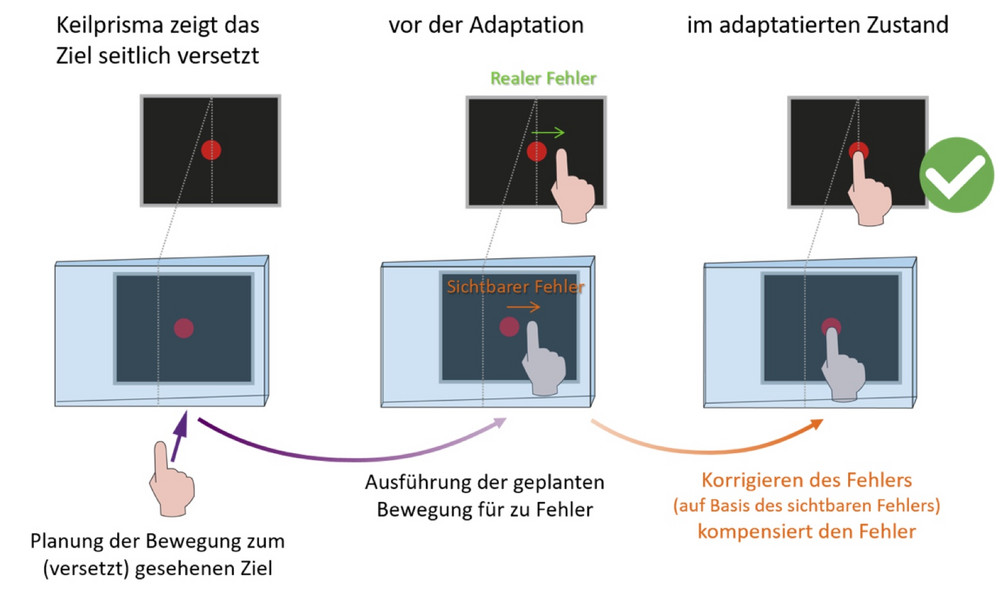
Social Neuroscience
Nearly all primates, including humans and macaque monkeys, are very social. Since their brains have developed to support social behaviors, it is important to study brain function in social contexts. In our research explores how primates coordinate their behavior during social interactions. We use experiments similar to the game we offer you to play here to compare the behavior across different primate species from monkeys to humans. We use games that encourage different levels of coordination and/or competition, allowing us to experimentally modulate the social context in which decisions are made. Ultimately, we are interested to learn how social context modulates neuronal representations of own and others’ perceptions, decisions, and actions.
With our cross-species approach we can first probe humans and monkeys for similarities and differences in behavior and then use brain recording and interference methods available in monkeys to study brain mechanisms of healthy and impaired social processing.
In our normal social life we attend to each other. We try to deduce others’ motives and predict their actions and adjust our own behavior to shape the outcome of the interaction according to our preferences. Game theory offers a wealth of simple games that can be used to probe how individuals deal with different types of interactions, ranging from competition to cooperation.
Here we ask you to play a specific game that requires coordinated actions of two players, we call the “delivery game”:
Each of two players living in different cities wants to deliver a truck full of sweets from the other city to their home just in time for tea. Each truck can either take a straight and smooth but narrow street that allows to deliver a full load of sweets, or a detour over bumpy backcountry roads that do only allow a partial load (otherwise the boxes break during the delivery). Unfortunately, the smooth road is so narrow that if two trucks meet they are blocking each other’s way and the deliveries will be too late. Each driver can take the straight road and hope that it is free, or take a detour and deliver less sweets.
We know from experience that in 10 successful deliveries both players can deliver from 0 to 40 sweets among them.
So, how close to the maximum can you and your partner get?
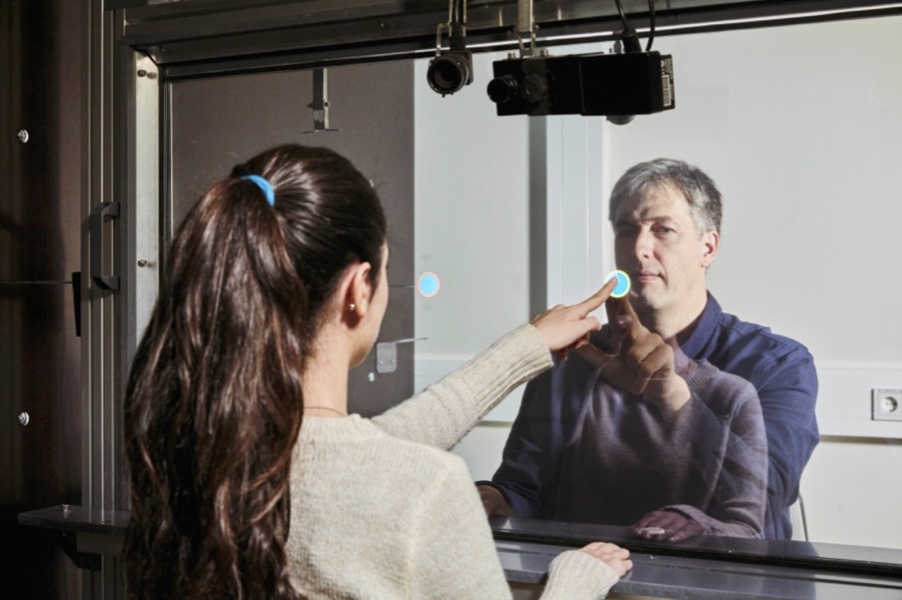
Studying the neural basis of motion perception and attention
Our brains consist of billions of cells. Many of these cells respond only to particular features of our environment. For example, one cell might only respond to a certain color, another to a specific direction of motion, and yet another to specific faces.
Motion is a feature that can be controlled very well in the laboratory, as it is defined only by a direction and its speed. Therefore, we focus our research on cells that respond to motion, because this allows us to study how the activity of individual neurons is related to properties of the stimulus.
We know from behavioral experiments with humans that mental states, such as attention, can affect our perception of motion. We are now trying to understand what’s happening in the brain when perception changes.
We find that, for example, a monkey’s brain cell that becomes active when we see upward motion, becomes even more active when the monkey pays attention to the upward motion.
This means that when I see exactly the same scenery twice, my brain will react differently and I will perceive it differently, depending on my mental state.
